Do you want to paint your wargaming miniatures faster? Batch painting or assembly line painting are best practice methods for completing large miniature painting projects. The key to successful batch painting of miniatures is to keep your tools and techniques simple, minimizing any risk to mistakes and reducing executing decisions on color choice and composition.
I’ve painted miniatures for many years. Whether I paint for my collections or for commissions projects, I’ve learned a few tricks for painting models efficiently and quickly without sacrificing quality. In this article, I share what I learned along with the mistakes to avoid when you want to quickly batch paint miniatures using an assembly line approach.
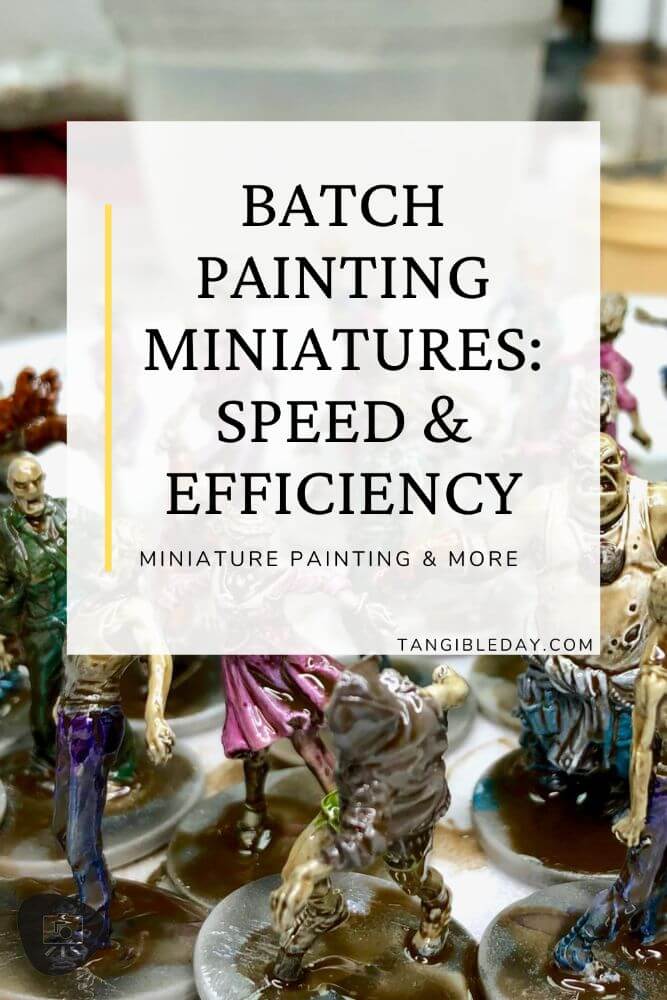
Key Points for Batching Painting Miniatures
- Use a simple color scheme
- Understand the importance of contrast
- Paint with a larger brush or airbrush
- Learn to paint with acrylic washes and apply the dry brushing technique
FYI – Batch painting is the process of painting miniatures whereby a cluster or group of models are painted at the same time. Batch painting often uses an assembly line workflow, in which multiple models are painted serially using the same method, paint color, etc.

“Contrast” is the Principle Behind Every Batch Painting Trick
Contrast is the concept of applying “opposites” to your painted model. You can apply contrast through the use of color and value. In this case, contrast is a measured by the distance between light and dark values and warm and cool color temperatures.
Here are a two common examples of things you can do to add contrast on your miniatures:
- Use dark shades and bright highlights
- Apply warm and cool colors
People are attracted to visual subjects that exhibit contrast. Contrast may appear when you paint a model with dark shadows and bright highlights. You can also push the idea of contrast using opposing color temperatures of cool tones and warm tones. The more contrast you paint on your miniature, the better it will look.
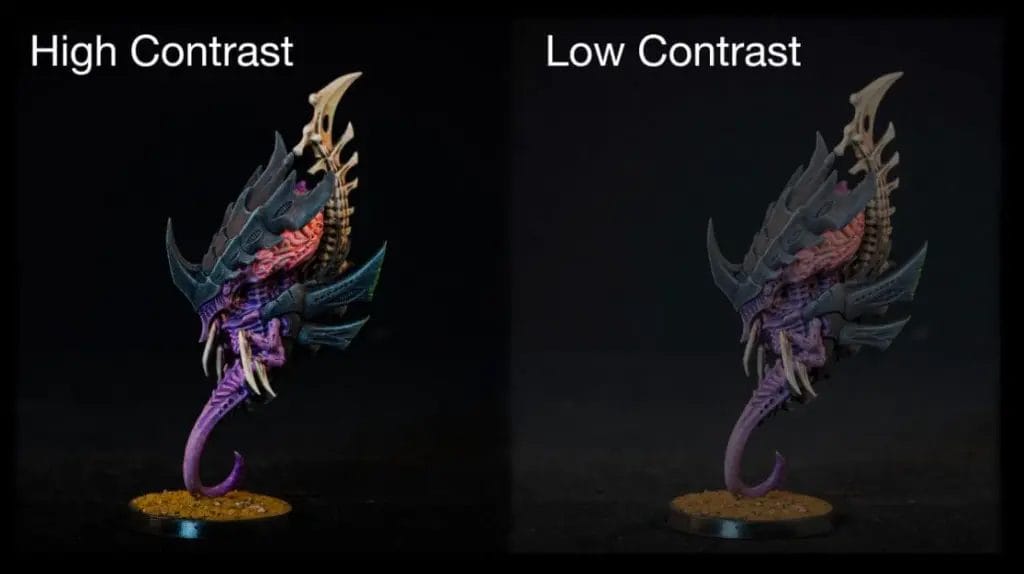
There is something magical about contrast. You can see contrast with a setting Sun, glowing warmly on the horizon, while the sky above exudes a darkening blue and twilight. In non-metallic metal (NMM) painting styles, high contrast necessary for the overall appearance of reflective material.
I’ve illustrated the importance about contrast in many other painting articles, including how to use Citadel Contrast Paints for painting wargaming miniatures. Ultimately, any technique you apply for painting your miniatures, including batch painting, will want to focus on making sure contrast is maintained throughout the model.
My Tips and Tricks for Batch Painting Miniatures (Army Sized Projects)
Are you looking for the fastest, easiest way to mass-paint miniatures? If you’re painting a large number of models in the 28-32mm scale (e.g., Warhammer 40k, wargaming figures, HO- or S-scale for model trains), here are some simple tips for getting your project done faster.
Tip #1 – Paint multiple models of the same type and kind
The key to efficient batch painting is to simplify your workflow as much as possible. A single batch, cluster, or cohort of models should include miniatures that are similar in size, shape, and type, as much as possible. For example, paint all the Warhammer 40k Space Marines with boltguns at the same time. Don’t mix in Terminators. Paint the HQ models, separately.
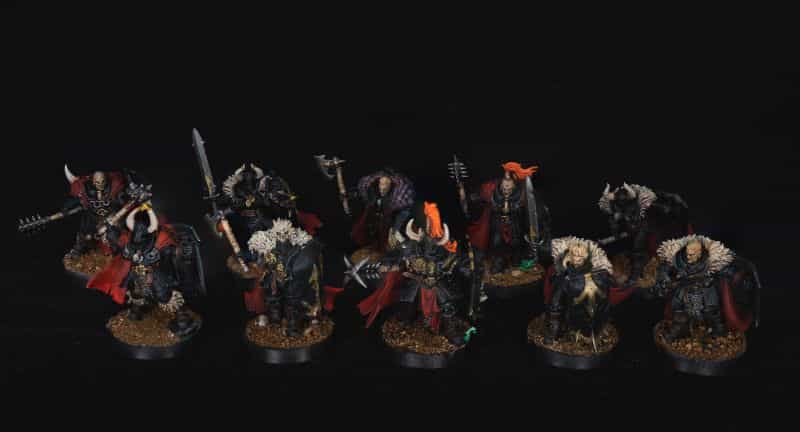
Painting models of the same time increases the efficiency of assembly line painting. This is because when you paint similar models together, you can use the same techniques and paints for all the models. You can load your brush with a single color and paint every miniature in the batch with that color on the same surfaces. Your mind doesn’t need to switch gears.
Tip #2 – Use a limited and simple color scheme
Every color you decide to use in your army will add complexity to the paint job. Decide upfront that you’ll only use 5 colors for every miniature in the batch you’re painting. When you assemble your miniatures on your painting desk, a simple color scheme will reduce your executive decision making and expedite your process.
Every decision you make while painting miniatures will slow you down. My trick for efficient batch painting is to ensure that my color palette is simple and restricted to the bare essentials. For example, I will choose a single basecoat color, a wash, and 2-3 accent colors. Working with these limited paint colors makes my choices simple and quick.
Tip #3 – Paint with a large brush
In batch painting, the details aren’t as important as the “big picture”. I’m of the mindset that the larger your paintbrush, the easier it is for your mind to “see” the whole rather than the granular. For assembly line workflows, a large paint brush will help you speed paint through all the surfaces on your multiple models with less frequent paint loading.
A large paint brush has a larger capacity and will let you apply paint over broad areas of your model. With a decent quality paint brush that holds a fine point, you can also paint with precision, if needed. You’ll have an easier time getting good coverage with paint when you use a larger brush, too. You’ll paint things like shoulder pads or armor plates with less hassle.
See this article about the best brushes for painting miniatures and ways you improve your ability to paint details.
Tip #4 – Try painting with an airbrush
This tip is related to #3, where you want to use a large brush to batch paint your models more efficiently. An airbrush is a great tool for batch painting because it allows you to paint through all the same colors on your models in a single pipeline. Depending on the model, it is possible that you can paint an entire model with an airbrush.
Load your airbrush with your paint. Make sure it’s of the proper thinned viscosity, and spray the paint over all the surfaces of your miniatures in a single pass. Here’s a full guide about using an airbrush for painting miniatures and models.
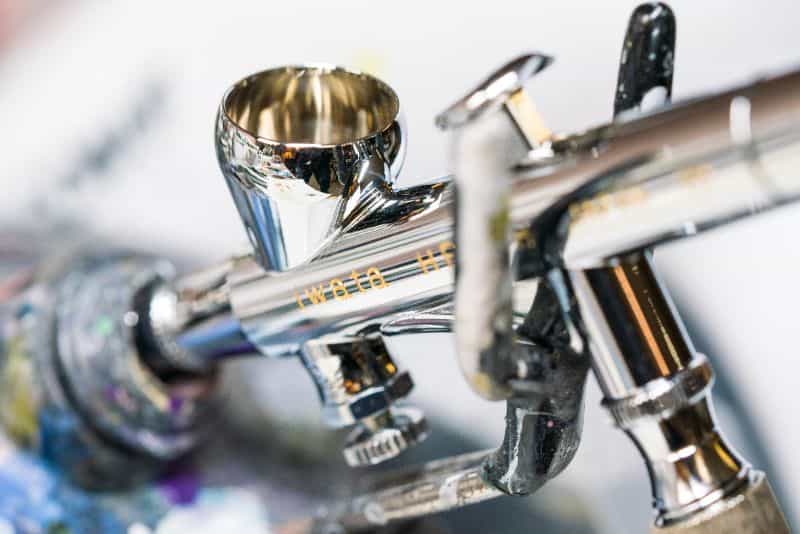
The ideal airbrush for batch painting will depend on your personal skill level and what you’re trying to achieve. For most uses, however, I recommend an airbrush that has a decent paint cup size (1oz or larger), and a nozzle size of at least 0.3mm.
Be aware that airbrushes do require good upkeep to maintain proper function. This can take up a lot of time. Some people use ultrasonic cleaners to keep their airbrushes clean. Collectively, airbrushes have pros and cons for painting miniatures, as compared with regular brush work.
Tip #5 – Use a dry palette
Wet palettes are very popular for painting miniatures. However, for batch assembly line painting, a wet palette can slow you down unnecessarily. You can see why I don’t recommend wet palettes for most paint work. Instead, I strongly suggest using a dry palette for painting models in bulk.
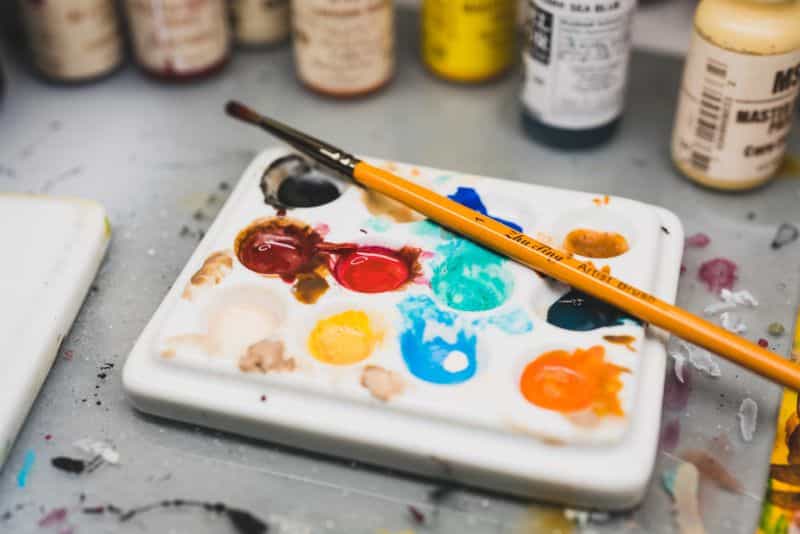
The reason I prefer a dry palette is because it forces me to choose a limited color palette (see tip#2). It also forces me to paint as many of the models in my current “batch” quickly. Paint will dry if I go too slowly. Finally, a dry palette is easier to maintain and keep clean.
When I’m painting a lot of models at the same time, I will always use a glazed ceramic palette with round bottomed wells. This keeps all my paints visible and the same viscosity. The paints won’t get too thin, which often happens with wet palettes. A dry palette makes painting multiple models more predictable and gives me more control.
Tip #5 – Keep your batch size under 10 models
If you’re painting large armies, you may be tempted to batch paint too many models at the same time. One of the problems with large projects is the looming boredom and tedium that creeps into you.
To stay motivated, we all need to feel like we’re making progress. Seeing and experiencing our progress with any project is a reward that keeps us going. If you have too many models in your model cohort (15 or more miniatures), then it is likely you’ll get into a rut where you’re not feeling the progress that you’re making.
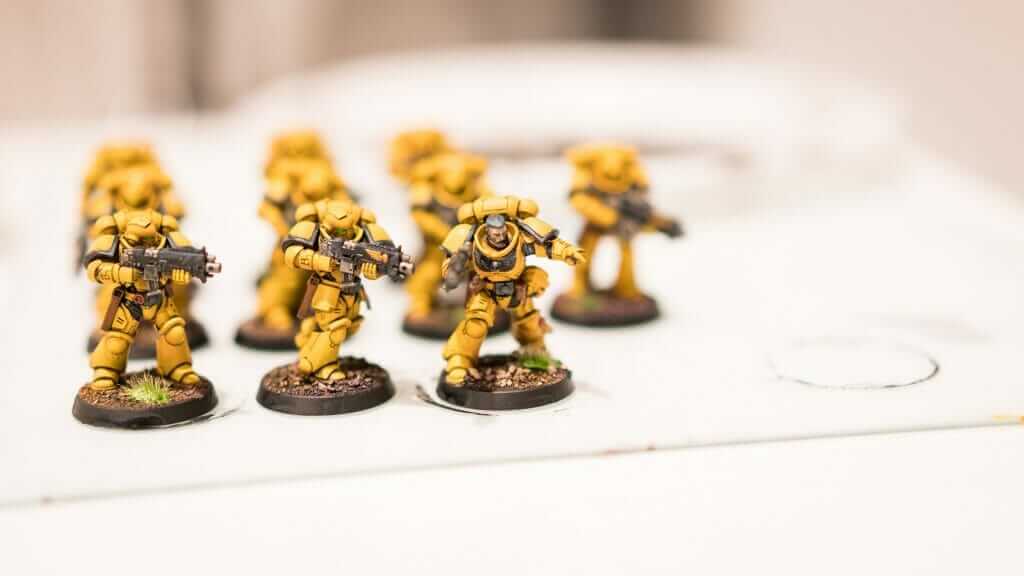
The ideal number of models in a batch miniature painting job is around 10 trooper sized models. This could be a unit of 10 Warhammer 40k space marines, or a full unit of Warmachine Cygnar Trenchers. For larger models, such as a group of Rhino tanks or Light Warjacks, you’ll want to have a smaller painting batch.
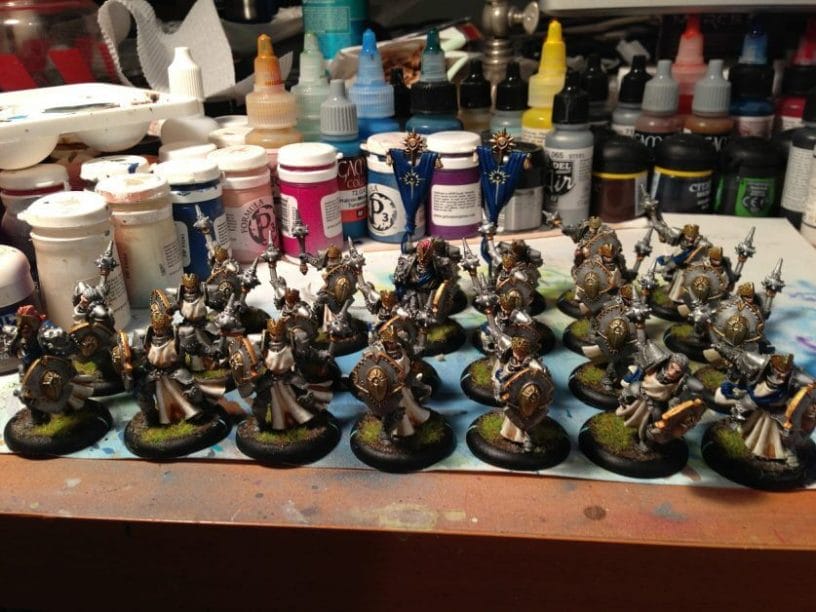
Ultimately, the key is to make sure you experience progress with your painting project. Limiting your batch size allows you to feel and see progression in your army-sized miniature painting project.
Tip #6 – You can work on multiple batches at the same time
This is related to tip #5, where you want to ensure you stay motivated. In this case, you’re encouraging yourself to paint multiple batches of models, simultaneously. Obviously, if I have a larger number of miniatures that are all the same or similar type, I will batch paint them together.
But, then if I want to get even more variety into my workflow done, I’ll batch paint “multiple batches”. In other words, I’m batch painting…with batches.
This is not the same as having a large batch size. Instead, you can select multiple types of models and paint them all at the same time. For example, I like to have a batch of ten (or fewer) models that are all either Ork or Tau infantry models.
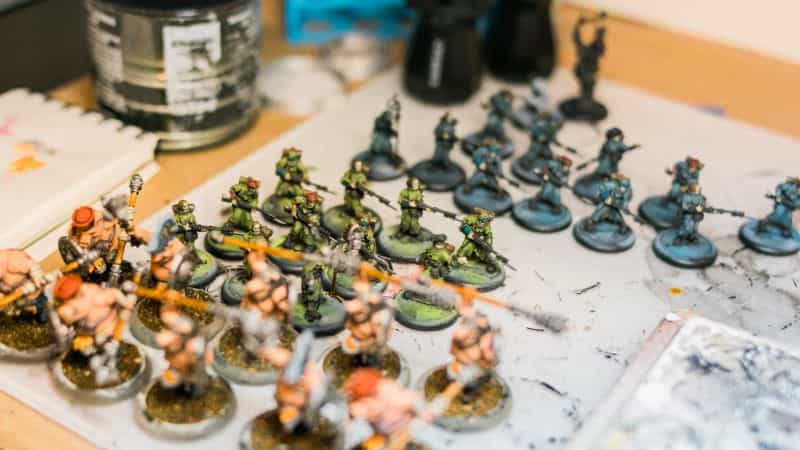
I’ll choose one color for my Tau models and another color for the Orks. This allows me to paint them fairly quickly while being able to clearly see how far I’ve come in my painting project (i.e., the big picture). This visual motivation helps me to complete the models quickly for a number of reasons.
First, it’s much easier to paint ten Tau Firewarriors at the same time than it is to paint one and then wait for drying/curing times. Plus, I can mix in other colors on my palette for variety. This means that I could have a Tau scheme painted with pink or purple highlights from another batch project, such as those pesky Orks, I’m working on.
Second, after painting a group of ten models of the same type, I will feel more progress than if I just painted one miniature and then moved on to something else. If you work through your multi-batches quickly, you’ll have more time to do other things in your life.
Tip #7 – Mix up your batch size
While I generally don’t recommend large batches, there is something to be said for mixing it up a bit when painting a lot of models at the same time. For example, maybe one day you paint 10 infantry models and another day you paint 5 vehicles and 5 infantry models.
Using my own example, I’m currently preparing for a narrative campaign that involves an invasion of Orks against my Tau forces. The units representing the different armies are roughly 20% smaller than their standard size counterparts. So, instead of painting 10 Firewarriors at once, I paint 2 Strike Teams (5 firewarriors) at the same time.
The size of batches should depend on how you are feeling and your own personal motivations. Making changes like this can help to keep you motivated when painting a large amount of miniatures.
Tip #8 – Don’t overthink color schemes
When batch-painting, most people will try to plan out their color scheme in advance. This is actually not a good idea when batch-painting due to what I mentioned earlier about mixing up your batches.
The key with painting multiples of the same model at once is to keep it simple, especially if you’re one of those people prone to overthinking things. Don’t try to have a complex scheme when working on multiple miniatures simultaneously.

When I paint an Ork unit, for example, I don’t worry about choosing colors beforehand. When I start painting them, I just grab the paints off of my palette and go from there. Normally, with large batches (see tip #5), I tend to go with an Ork scheme of red pants, a brown shirt and green skin. A tad cliche, but quick to do.
I’ll pick a base color for the skin tone, followed by shading, then highlights. One thing I like to ensure with batch painting projects is to ensure my basecoats are very consistent and even over most of the miniature. This consistency makes it much easier complete a model because there is less work to produce a complete, clean appearance. No splotchy models.
Of course, this is just one tip I use for batch-painting multiple models. I like to keep things simple so that I can focus on the painting itself and not get too hung up over how many colors I’m using or what scheme I’m following.
Tip #9 – Make it quick and dirty
The key to batch-painting is to make sure that you can paint quickly and with little extra thought. Try not to worry over the details when painting so many models at once. Worrying about those fine points will slow you down.
Focus on the skin tone of your miniatures, for example. Work on one miniature’s skin tone at a time (maybe 3-4 Tau Firewarriors) and with each new model you can decide to either use the same colors as previously or mix in something else so that they look slightly different from their comrades.

If you find yourself wanting complex schemes, go small. For example, paint a single-model in each batch with some kind of complex scheme and have the others be your “regular” colors. I prefer to use this method often, because it keeps things simple while still letting me experiment and discover new color combinations. I’ve painted long enough to know that I can get bogged down, quickly, without switching things up.
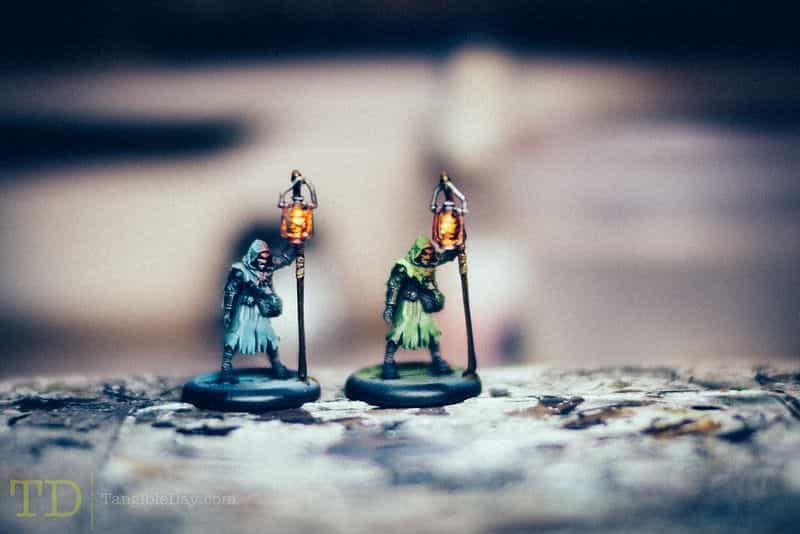
If you find yourself getting distracted when painting, it may be a good idea to go small as well. Smaller batches tend to require less thought on your part and usually result in more even coverage over the models. This isn’t always true, but from my experience it gets me through large armies, e.g., Tyranids, faster with less demotivating issues, like tedium.
Tip #10 – Don’t stress over details
Details don’t matter. Well, they do, but don’t worry so much about making sure that each and every model is completed as perfect as the last, especially when you have so many models to get through.
When I’m working on batches of miniatures, I don’t usually sweat the small stuff because it distracts me from taking care of larger projects and gets me frustrated over details that really don’t matter when painting large amounts of models at once. It is easier for me to just get through the painting and not worry so much about that one Ork that happens to have a black mark on his red pants.
If a model doesn’t look perfect, I will repaint it later. When you are batch-painting, don’t try to go for perfection in each and every miniature – your quality control will suffer. Instead, try to focus on how much you’ve gotten done and the time that you’ll save by batching your miniature painting. This will help put things in perspective when it comes to figuring out what details are worth stressing over and which ones aren’t.
Conclusion
If you want to paint your wargaming miniatures faster, batch painting is one of the best methods. The key to successful miniature batch painting is keeping your tools and techniques simple, minimizing any risk for mistakes or decisions on color choice and composition.
I’ve painted many models in my time and I know that it can take a toll on one’s sanity if you try to do too much at once. Painting with an assembly line approach will help minimize the number of colors being mixed together (or avoided altogether), as well as reduce how often you need to make decisions about what colors go where (the less decisions made while painting means more time spent actually doing work).
Hey, that’s it. I hope you found this article about batch painting miniatures helpful! Let me know!



Tangible Day on YouTube (Miniatures and More!)

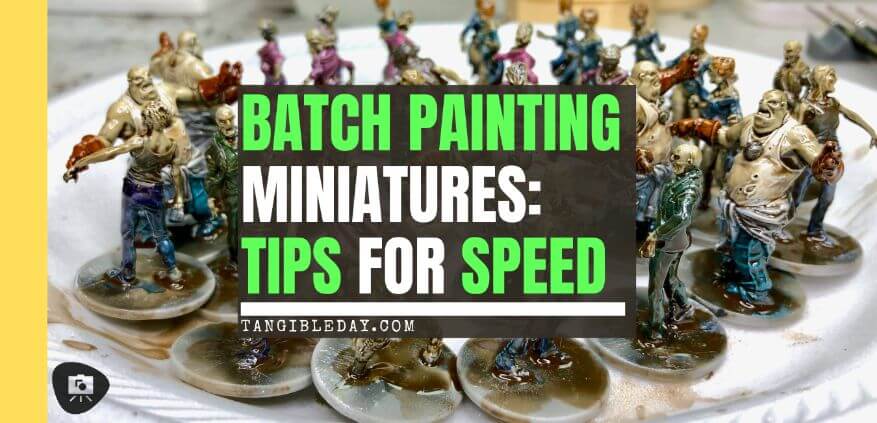
Pingback: Batch Painting Miniatures (Tips and Tutorial) - Toy Newz